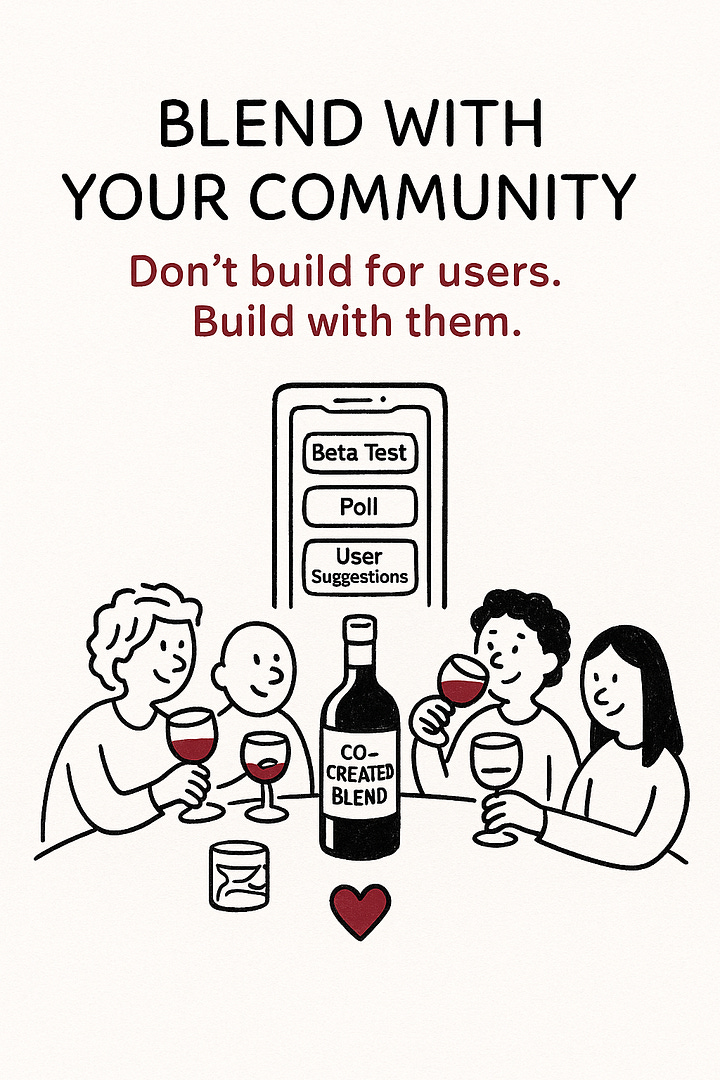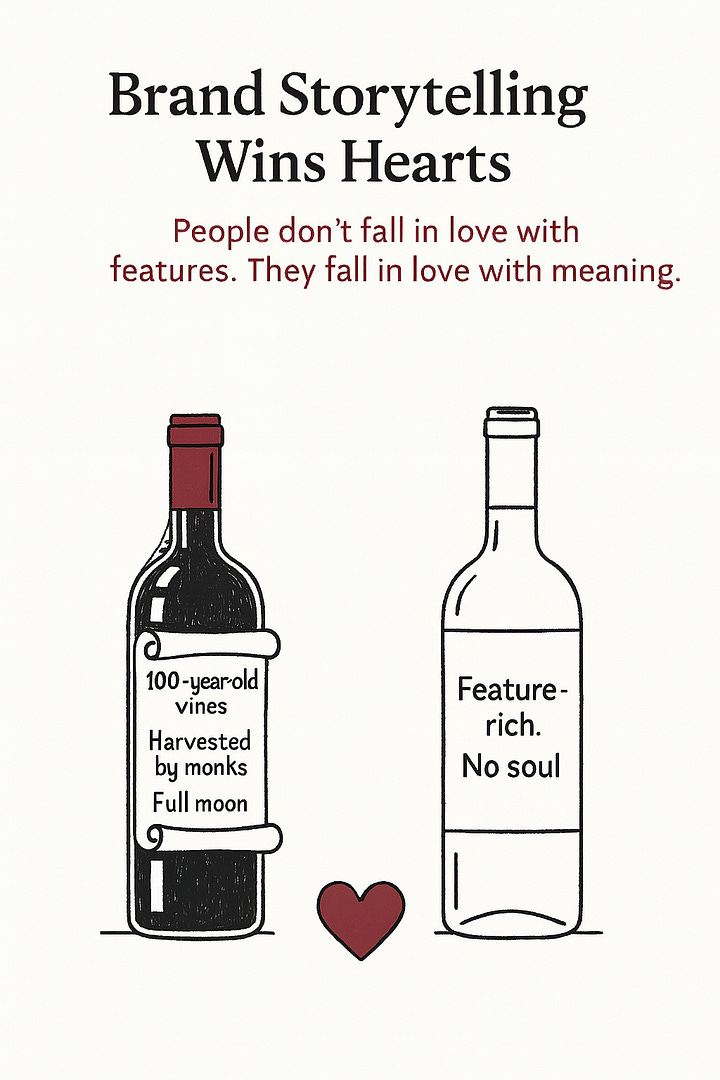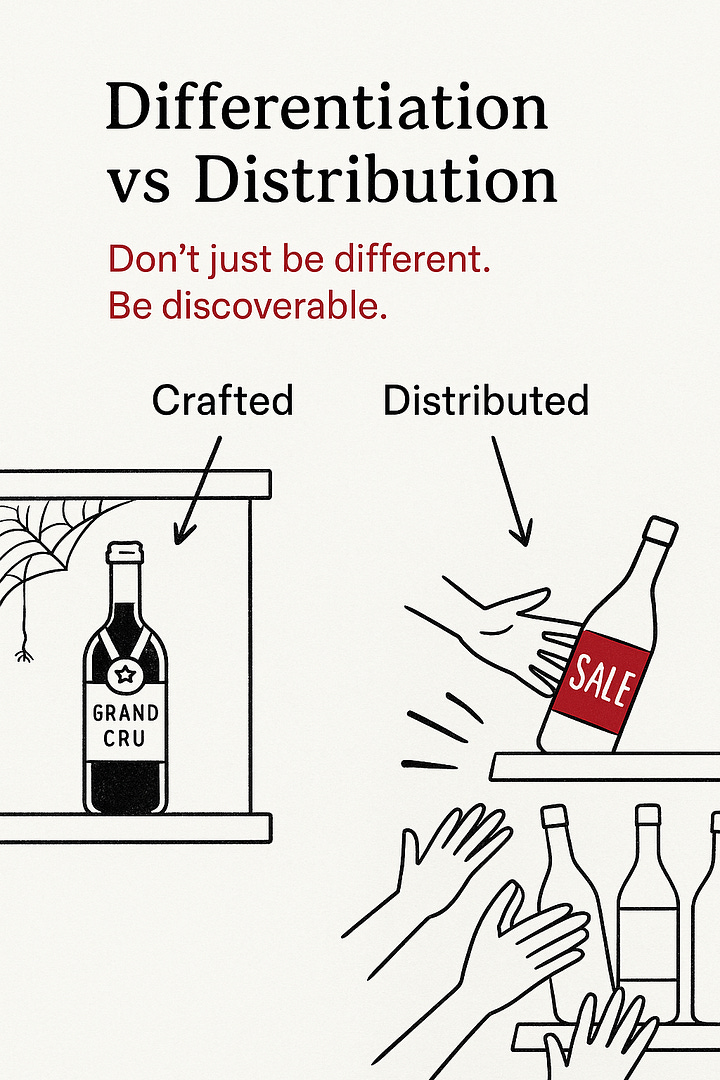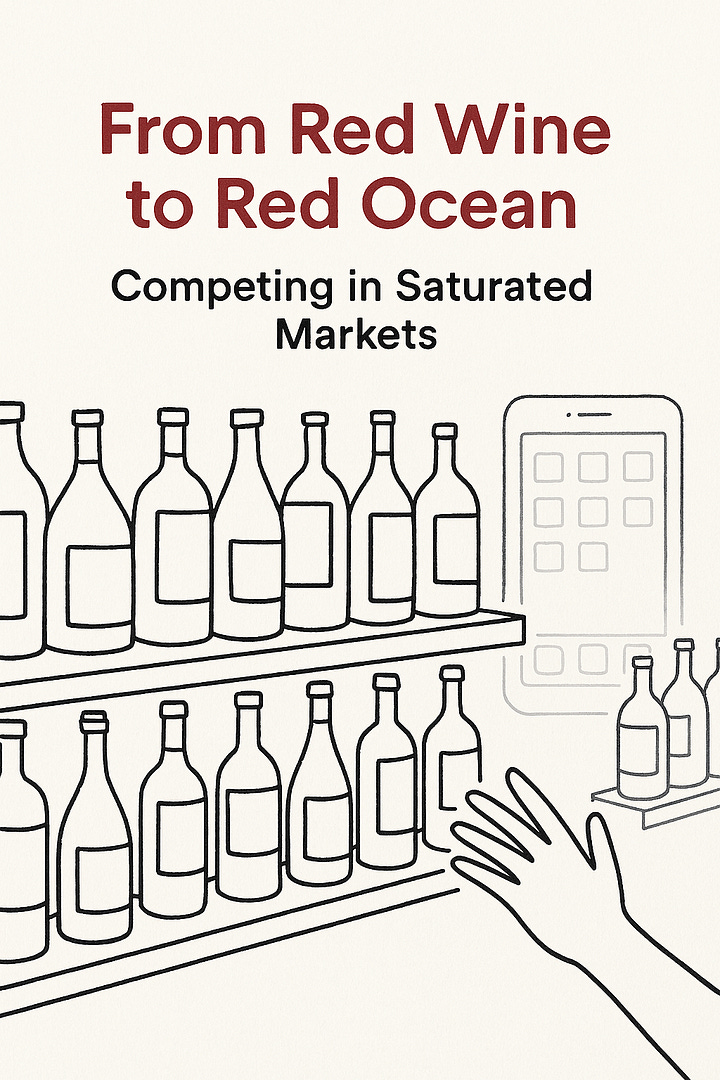From Red Wine to Red Ocean: Competing in Saturated Markets
Struggling to stand out in a saturated market? Learn what wine blending can teach us about product growth through differentiation, storytelling, and community co-creation.
Over the weekend, I tried my hand at creating my own DIY Bordeaux — blending single varietals of Cabernet Sauvignon and Merlot, convinced I could elevate the quality of each. The result? A surprise twist: everyone at the table ended up preferring their own custom Left and Right Bank-style blend. Subjective taste. Personal bias. And a little winemaker ego.
But that wine-fueled experiment sparked a bigger question:
In a world overflowing with Bordeaux and Bordeaux-style blends, how does any bottle stand out?
Now replace "wine" with your product.
Your app. Your SaaS. Your direct-to-consumer brand swimming in a red ocean of sameness.
Welcome to the Red Ocean, where competition is bloody and attention is scarce. In saturated markets, survival isn’t about brute force.
It’s about clarity, craft, and choosing the right blend of strategy and soul.
Let’s decant this.




1. Differentiation vs. Distribution
🍷 Wine Lens:
A beautifully aged Bordeaux might boast medals, mouthfeel, and a Master Sommelier's approval, but it still gathers dust if it’s hidden on the bottom shelf of a small boutique store. Meanwhile, a private-label bottle with zero pedigree flies off supermarket aisles thanks to strategic shelf placement, aggressive pricing, and sheer reach.
📱 Product Lens:
You’ve crafted the perfect app. Sleek UI. Bug-free. Elegant onboarding. Great, now what?
Without SEO. Without growth loops. Without partners shouting your name, you’re invisible.
💡 Takeaway:
In saturated markets, growth isn’t just product-led. It’s distribution-enabled.
Differentiate all you want, but if no one finds you, you lose.
Don’t just be different. Be discoverable.
2. Brand Storytelling Wins Hearts (and Wallets)
🍷 Wine Lens:
Ever paid more for a wine just because it claimed to be made from 100-year-old vines, hand-harvested by monks under a full moon?
Of course you have. Because a story sells. It elevates the experience, adds soul to the sip, and justifies the price.
📱 Product Lens:
Your product isn’t just code and pixels. It’s a story waiting to be told.
Why did you build it? Who are you helping? What truth does it fight for in a sea of sameness?
💡 Takeaway:
In a red ocean, your story is your sharpest edge.
Craft a narrative that resonates, inspires, and sticks.
Think Simon Sinek meets Château Margaux.
People don’t fall in love with features. They fall in love with meaning.
3. User-Driven Innovation: Blend with Your Community
🍷 Wine Lens:
What if Bordeaux winemakers asked consumers to co-create new blends? Like we did at home. Each person crafting a mix that suited their unique palate. Suddenly, they’re not just drinking wine, they’re part of the process.
That’s ownership. That’s loyalty.
📱 Product Lens:
Modern product growth isn’t built in isolation.
Figma invites users to shape the platform through plugins.
Notion thrives on community templates.
TikTok trends are created with users, not for them.
💡 Takeaway:
In saturated markets, co-creation is a moat.
Listen. Adapt. Build with, not for.
The best products don’t just serve users, they’re blended with them.
Final Thoughts: The New Blend Strategy
The future doesn’t belong to the boldest brand. Or the flashiest feature set.
It belongs to those who blend better.
In a red ocean, survival isn’t about being louder; it’s about being smarter.
Winning comes from a thoughtful mix:
A strong point of view (differentiation)
A compelling why (storytelling)
A community-backed how (user-driven innovation)
Because (just like wine) your product’s greatness isn’t found in isolation.
It’s in the blend.
So the next time you sip a Bordeaux or tweak your onboarding flow, ask yourself:
👉 What am I blending — and for whom?
